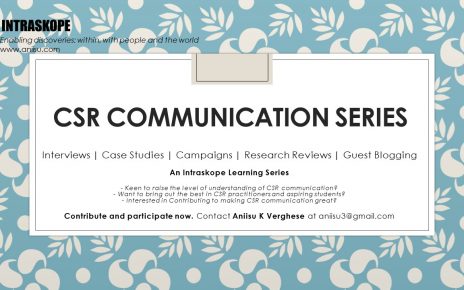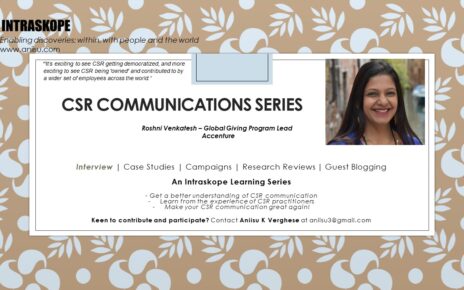Bipin is at his wit’s end. As the CSR leader for Eurorol, he is responsible for managing the social responsibility corpus basis the government directive on doing social good. However, he is a conundrum. Despite having clarity about the areas which his organization can focus their attention on the non-governmental organizations (NGOs) he invites to share proposals sound tentative. He didn’t ‘feel’ they were committed enough to make a large impact. Also, the information they shared about what other organizations were doing in the same space wasn’t helpful. He decided to speak with Ioana, his friend in the not-for-profit sector to understand her views.
Bipin: “Hello Ioana, thanks for sparing time from your busy schedule. I know you have been in the midst of some proposal writing and submission.”
Ioana: “That’s fine. Anything for you Bipin and to help you get your act together. So how it is going at Eurosol and your CSR investments?”
Bipin: “I am not feeling great about the approach to selecting NGOs. I believe that these entities don’t have credibility and they are unable to show me the impact of what they do. How can I justify engaging with them when the rules both internally and outside have become so stringent?”
Ioana: “Well. I can understand why you are frustrated. After having spent so many years on this side of the fence I am still unable to get my peers and leaders to think professionally about social impact. They feel that corporates put undue pressure and attention on the wrong areas of governance and implementation. They don’t see the value of the bigger picture.”
Bipin: “What bigger picture? When I ask about their ambitions and intent they stare are me blankly like I asked them some profound question. I want to know how big are their goals, what are they going after which is changing the world and yet how practical are they about getting things done.”
Ioana: “Yes, while those are valid questions Bipin, you also need to appreciate the realities on the ground. It takes forever to get permissions to launch an initiative, the paperwork is mindboggling and reporting needs to be timely. You can’t expect miracles just because you are paying for it.”
Bipin: “We are expecting accountability for what is agreed. We want them to be bold and driven about getting stuff done for our beneficiaries. Is seeking authenticity and assessments of their work a tall order? What can do to identify the right NGOs to partner?”
Ioana: “I feel you must go by their actions, seek opinions from beneficiaries and other stakeholders about the impact. Talk to your peers and check if they have worked and had good experiences.”
Bipin: “You will be surprised! When I spoke with one peer he told me that the same NGO had sold him a similar proposal in exactly the same village we were adopting. This was a shocker. How can we call that trustworthy behavior?”
Ioana: “That is unfortunate. I am hoping it is an aberration. The intent is to do good for society but there has to ethics practiced.”
Bipin: “In another case one NGO we had given funds to, were sending our solar lamps to another school in a different state altogether without consulting us. This makes me every more choosy about whom we engage. Yet, there is no clear way to ascertain the right charity partner”
Ioana: “Why don’t you diversify your risks? Spread out the funds to multiple NGOs and then check their performance? Or ask your employees to tell you – like you know – crowdsource the solution!”
Bipin: “Won’t that spread ourselves too thin? Employees – you serious? How are they qualified?”
Ioana: “It may but it is better than putting your eggs in one basket and regretting it. You could trust your employees more than the NGOs – from what I gather in the conversation!”
Bipin: “That sounds like one tactic but it still doesn’t solve how we arrive at the right partners?”
Ioana: “Why don’t you instead copy what other companies do? That is, invest in those charity partners which they are already invested in. That way, you are ‘safe’ and you are in the same boat!”
Bipin: “How will that help? My organization’s purpose may not align with those with the other firms and therefore the CSR strategies may be disjointed. It will also seem like ‘we are playing catch-up’ with other companies.”
Ioana knows that this isn’t an easy solution and wonders what she can do to help Bipin. Do you have any suggestions on how to arrive at the right charity partner? Please share them here.
If you found this article useful, please subscribe to my blog at www.aniisu.com or www.intraskope.wordpress.com. Do Do follow me on Linkedin at https://www.linkedin.com/in/aniisu/



